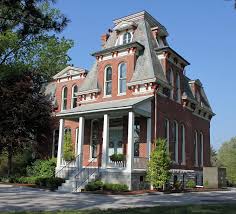The Charm of Historic Houses
Historic houses hold a special place in our hearts and minds, offering a glimpse into the past and preserving the stories of those who came before us. These architectural gems stand as testaments to craftsmanship, heritage, and the passage of time.
Preserving History
Historic houses serve as living museums, allowing us to step back in time and experience life as it was centuries ago. From grand mansions to humble cottages, each historic house tells a unique story about the people who lived there and the events that shaped their lives.
Architectural Beauty
The architecture of historic houses reflects the styles and trends of their respective eras, showcasing intricate details, elegant designs, and timeless craftsmanship. From Victorian mansions with ornate trimmings to colonial homes with simple lines, each historic house is a work of art in its own right.
Cultural Significance
Historic houses play a vital role in preserving our cultural heritage and identity. They provide a tangible link to our past, reminding us of where we came from and how far we have come. By protecting these architectural treasures, we ensure that future generations can appreciate and learn from our history.
Community Impact
Historic houses are more than just buildings; they are anchors in our communities, fostering a sense of pride and belonging among residents. They often serve as gathering places for cultural events, educational programs, and community celebrations, bringing people together to appreciate their shared history.
Conclusion
Historic houses are not just structures; they are living monuments that connect us to our past and inspire us for the future. By preserving these architectural treasures, we honor the legacy of those who came before us and ensure that their stories continue to be told for generations to come.
6 Essential Tips for Preserving and Restoring Historic Homes
- Research the history of the house to learn about its significance.
- Preserve original architectural features and details whenever possible.
- Use period-appropriate materials and colors during any restoration or renovation work.
- Regularly maintain the house to prevent deterioration and damage over time.
- Consider consulting with a historic preservation expert for guidance on proper care and maintenance.
- Respect any restrictions or guidelines set forth by local historic preservation organizations.
Research the history of the house to learn about its significance.
Researching the history of a historic house is a crucial step in understanding its significance and preserving its heritage. By delving into the past owners, architectural styles, and historical events associated with the house, one can uncover valuable insights that bring the building to life. This knowledge not only adds depth to the property but also helps create a richer narrative that honors the legacy of the house and its place within the community.
Preserve original architectural features and details whenever possible.
Preserving original architectural features and details of a historic house whenever possible is essential to maintaining its authenticity and historical significance. These unique elements, such as ornate moldings, intricate woodwork, and period-specific fixtures, not only add charm and character to the house but also tell a story of the craftsmanship and design aesthetics of the past. By retaining these original features, homeowners can honor the legacy of the house’s builders and occupants while ensuring that future generations can appreciate and enjoy its architectural heritage.
Use period-appropriate materials and colors during any restoration or renovation work.
When embarking on the restoration or renovation of a historic house, it is essential to use period-appropriate materials and colors to maintain the authenticity and integrity of the original design. By carefully selecting materials that were commonly used during the era in which the house was built and choosing colors that reflect historical palettes, you can ensure that the architectural character and charm of the home are preserved. This attention to detail not only honors the craftsmanship of the past but also enhances the overall aesthetic appeal of the house, creating a harmonious blend of old-world charm and modern convenience.
Regularly maintain the house to prevent deterioration and damage over time.
Regular maintenance is essential for preserving the beauty and integrity of a historic house over time. By staying proactive and addressing issues promptly, homeowners can prevent deterioration and damage that may occur due to aging or environmental factors. Regular inspections, repairs, and upkeep not only help maintain the historical significance of the house but also ensure that it remains a safe and comfortable place to live for generations to come. Investing in regular maintenance is a way to honor the past while safeguarding the future of a historic house.
Consider consulting with a historic preservation expert for guidance on proper care and maintenance.
When caring for a historic house, it is essential to consider consulting with a historic preservation expert for guidance on proper care and maintenance. These experts have the knowledge and experience to help you navigate the unique challenges of preserving a historic property, ensuring that its architectural integrity and historical significance are maintained for years to come. By seeking advice from a preservation expert, you can develop a comprehensive maintenance plan that respects the heritage of the house while also addressing any specific issues that may arise. Their expertise can be invaluable in safeguarding the character and charm of your historic home for future generations to appreciate.
Respect any restrictions or guidelines set forth by local historic preservation organizations.
It is essential to respect any restrictions or guidelines set forth by local historic preservation organizations when dealing with a historic house. These organizations play a crucial role in safeguarding the integrity and authenticity of historical properties, ensuring that they are preserved for future generations to appreciate and enjoy. By adhering to these regulations, individuals can contribute to the conservation efforts and help maintain the cultural significance of these valuable pieces of history.



